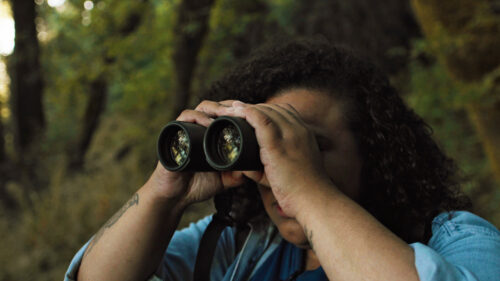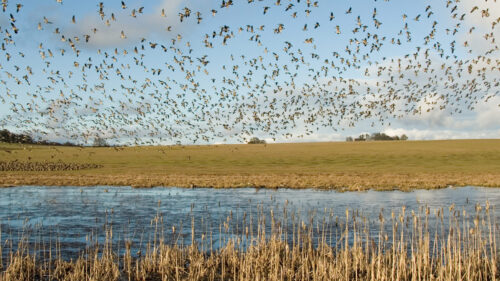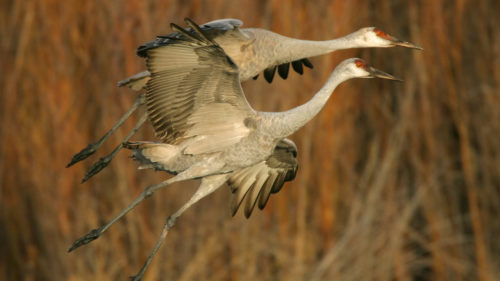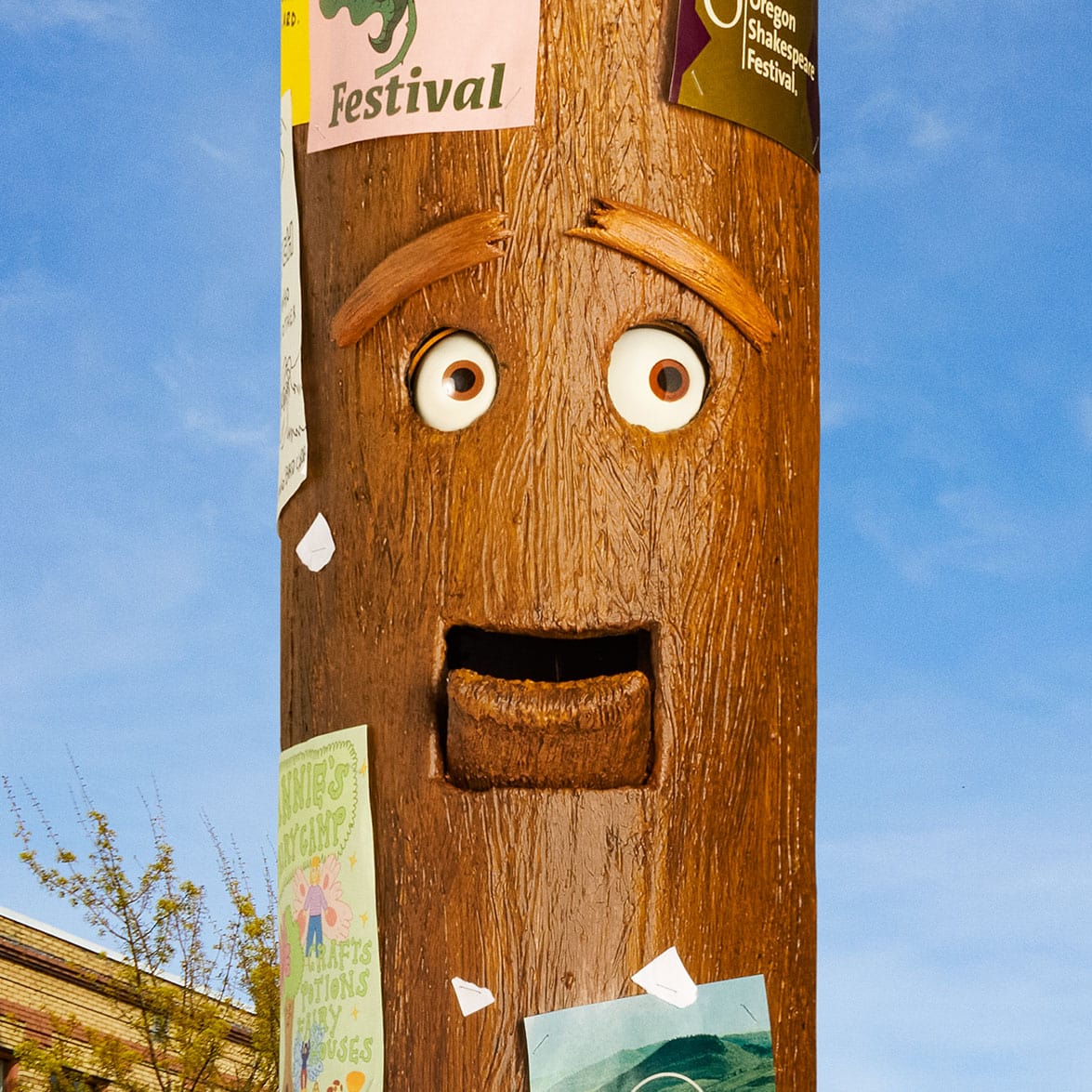I’m an avid birder and love raptors. Whenever I glimpse a soaring bald eagle, my breath catches. Maybe it’s their sheer size, or maybe it’s because their snowy white heads and tails make them so recognizable. It could also be that I’m old enough to remember a time when spying one was unusual because of their population decline.
It’s tempting to cave to cliché and call eagles regal. In truth they’re sociable, savvy and resourceful, which is a nice way of saying they’re not above stealing food from other creatures. If you want to witness the full spectrum of the bald eagle’s behavior, winter is the ideal time to spy on them, and few places are better than the Columbia River Gorge, due to the abundance of fish in the river.
Although eagles will consume anything they can get their talons on — including rodents, crabs, carrion, and even other smaller birds and their eggs — their preferred food is fish. In winter the Columbia River teems with native salmon and with shad, which were introduced to western rivers in the late 1800s.
For lucky Oregon residents and visitors, this means they’re accessible to viewers, says Morgan Olson, raptor education coordinator for the Columbia Gorge Discovery Center. During the winter months, migrants from the north swoop southward in search of ice-free hunting grounds on rivers, in reservoirs and along the Coast, joining our year-round resident eagles.
Video by Erick Durano
A Remarkable Recovery From the Brink of Extinction
The vibrant presence of bald eagles in the Columbia River Gorge is a testament to a remarkable comeback. Although many Indigenous inhabitants of North America see bald eagles as sacred, and they were even chosen as the symbol of the United States in 1782, they were once nearly extinct. Trapping and the use of industrial and agricultural chemicals decimated populations over the past 200 years. By 1963 fewer than 500 breeding pairs of bald eagles remained across the entire country.
Thanks to research and changes in public policy, chemicals like DDT that affected their reproductive system were eventually banned. Bald eagles gained protection under the Endangered Species Act in 1978. Populations bounced back in the next few decades, and in 2007 the numbers were healthy enough that the raptor was removed from the Endangered Species List.
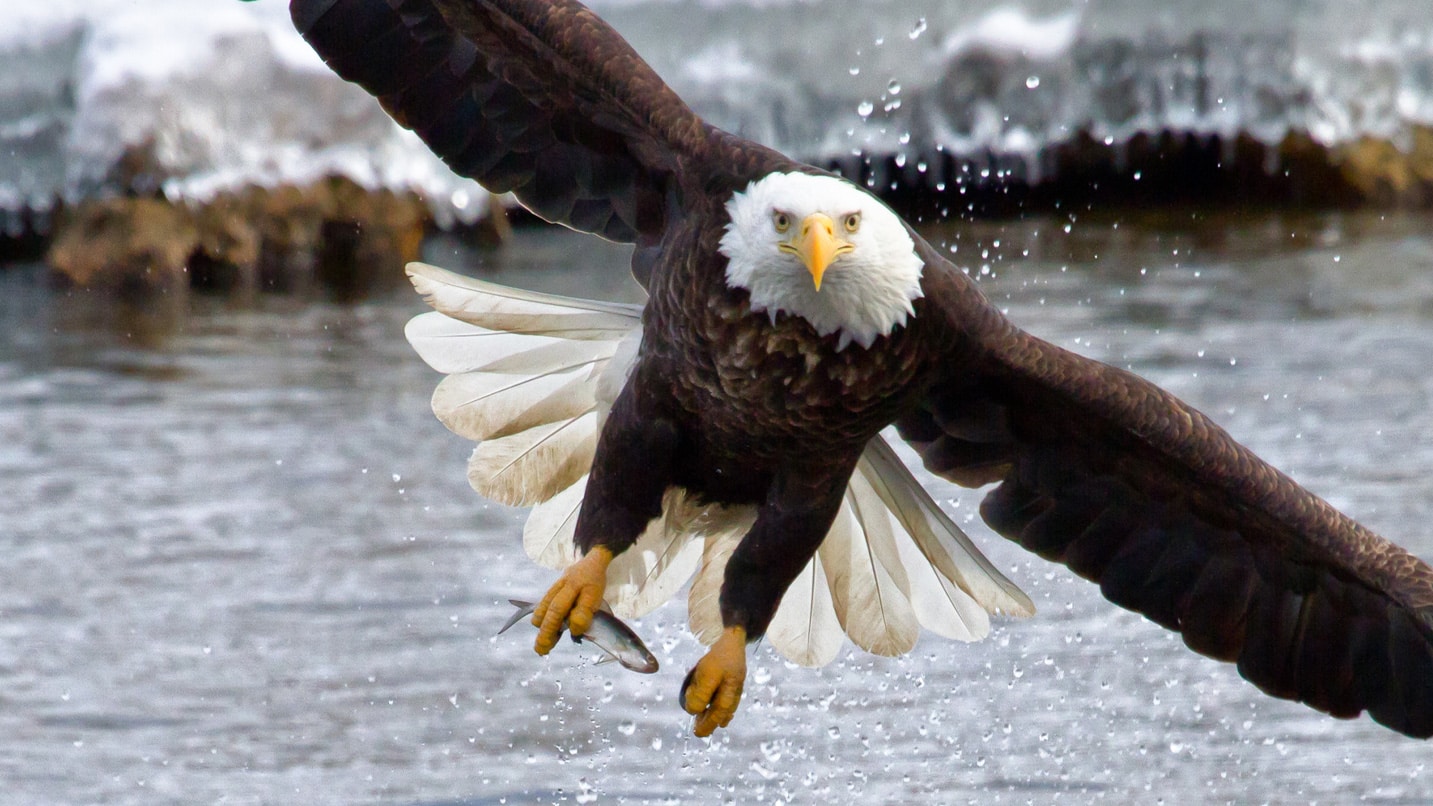
Eagle Hot Spots in the Columbia River Gorge
Because of these protections, you are now likely to find bald eagles at several stops along the Mt. Hood Loop of the Oregon Cascades Birding Trail, including Mosier Waterfront Park.
One important hot spot is the Columbia Gorge Discovery Center, just west of The Dalles. Try looking for eagles from the paved, 10-mile Riverfront Trail, a mostly accessible route which runs from the Discovery Center to The Dalles. While visiting the Center, you can also catch center educator Olson giving regular talks for the raptor program year-round. She’s usually accompanied by some of the Center’s resident birds, which include great horned owls, a red-tailed hawk and an American kestrel.
The most popular place for eagle ogling in the Gorge is The Dalles Lock and Dam, which is owned and managed by the U.S. Army Corps of Engineers. Good vantage points are the Visitor Center parking lot and Seufert Park, just adjacent. Position your binoculars toward the dam to Westrick Park, a secluded patch of green space connecting the dam with the Columbia River’s southern shore. (Once publicly accessible, the park is now restricted to Army Corps staff — and the eagles.)
“It’s the perfect pocket habitat, and it’s right next to the ‘grocery store’ with all those fish in the river,” says Amber Tilton, park ranger for the U.S. Army Corps of Engineers. The park is blocked by the wind on one side and the water’s turbulence keeps it from freezing. From mid-December through February, it’s not unusual to see 40 to 60 bald eagles fishing, playing and perching practically shoulder-to-shoulder in the row of tall trees.
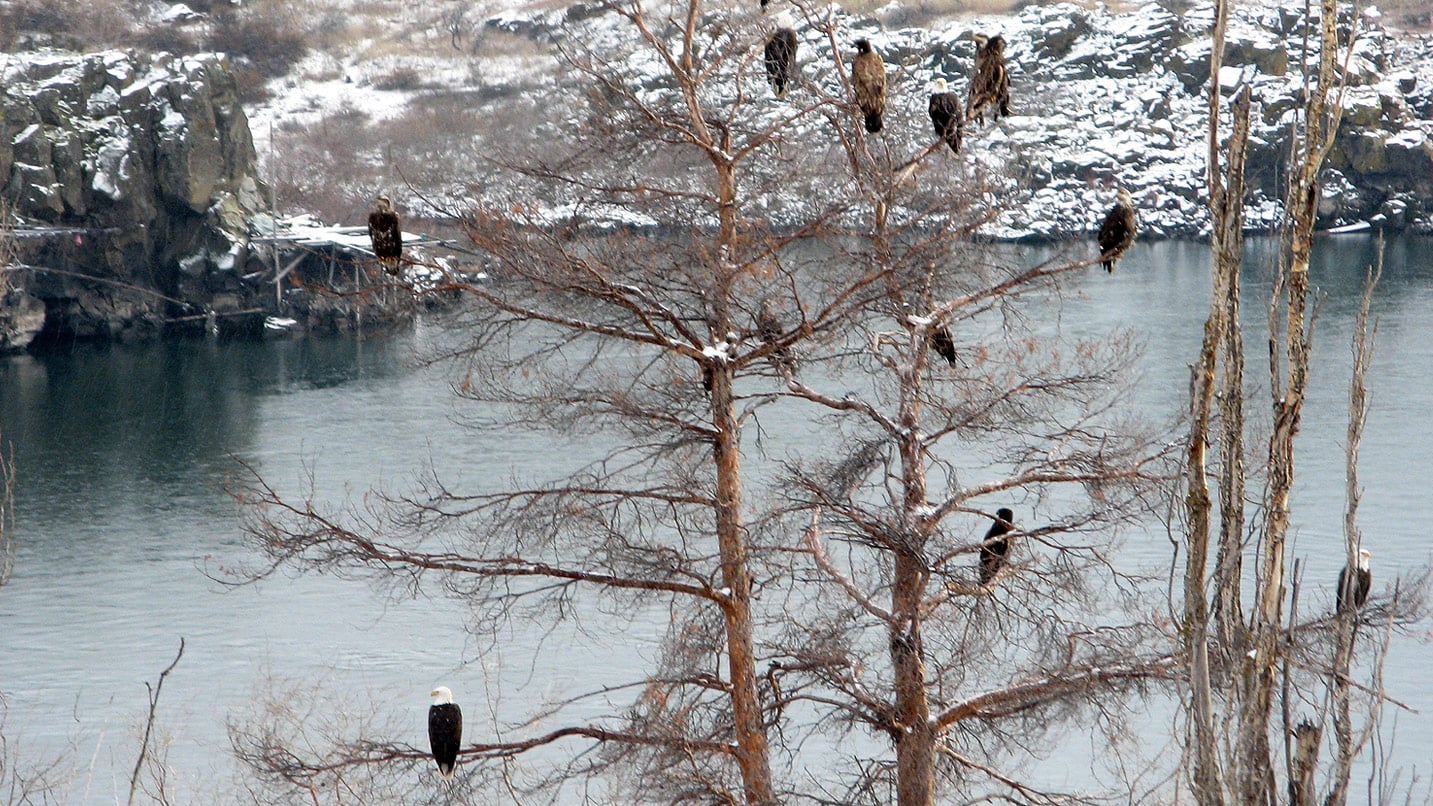
Celebrating Eagle Watch at The Dalles Dam
If you can arrange your trip for the third weekend in January, consider attending the annual The Dalles Dam Eagle Watch, typically held in January. Timed to coincide with the peak of winter bald eagles, the event includes ranger talks and video presentations. Experts with spotting scopes are also on hand to answer questions. The Discovery Center is a longtime partner at Eagle Watch, and Olson will be there with live raptors. She uses the event as an opportunity to educate people about the threats facing eagles and other raptors, and what people can do to help.
Tilton started Eagle Watch in 2008. Around that time, the bald eagles were claiming the green space as their own at Westrick Park, recently closed to the public. “There were a few eagles, then the next year there were more, then more,” says Tilton. She decided to invite people to come see the gathering.
You’re sure to see many eagles, so bring your camera and binoculars. You can hone your wildlife-photography skills with portraits of perching birds or action shots of eagles fishing. Or simply enjoy watching them, especially the juveniles, who like to chase each other and steal each other’s fish. “The younger ones are just learning how to do stuff; it’s like watching toddlers learn how to walk,” says Tilton.
The convocation — or flock — of eagles is also ideal for practicing bird-identification skills. Many Americans can identify an adult bald eagle, with its white-feathered head and tail, bright-yellow beak, and dark-bronze body. But eagles take several years to mature, and the mottled juveniles, which lack the characteristic white head and tail, are easy to confuse with other raptors, particularly similarly sized golden eagles.
Speaking of size, see if you notice any differences among the bald eagles, suggests Olson. Females are up to one-third larger than males, and eagles from colder northern climes tend to be larger than our Oregon eagle residents.
Up to 2,000 people flock to Eagle Watch, and some come year after year. Aside from that weekend, The Dalles Dam Visitor Center is closed in winter, but people are still welcome to come to Seufert Park and view the eagles. “It’s inspiring for people to see something that was on the brink of extinction; it gives you that sense of hope,” says Tilton. “It’s a good reminder of what we can do as a society.”
Eagle-Watching Tips
- Morning and dusk from mid-December through February are prime times for eagle watching. In the morning they’re beginning to rouse for the day; in the evening they’re returning to their roosts.
- Although eagles are certainly large enough to see with the naked eye, bring binoculars or a spotting scope to view them in more detail.
- Stay at least 300 feet from eagles and keep dogs leashed.
- Use a good birding guide to help identify other birds, including osprey, great blue heron and geese.
- To learn more about eagles in the Gorge, see this video from the 2021 virtual Eagle Watch event.
- Bald eagles are still protected under two federal laws: the Migratory Bird Treaty Act and the Bald and Golden Eagle Protection Act. To help protect them, avoid the use of rat bait — which can poison eagles if they scavenge ill or dead rodents — and lead ammunition and fishing tackle, which can cause lead poisoning and death if eagles ingest even small amounts.
